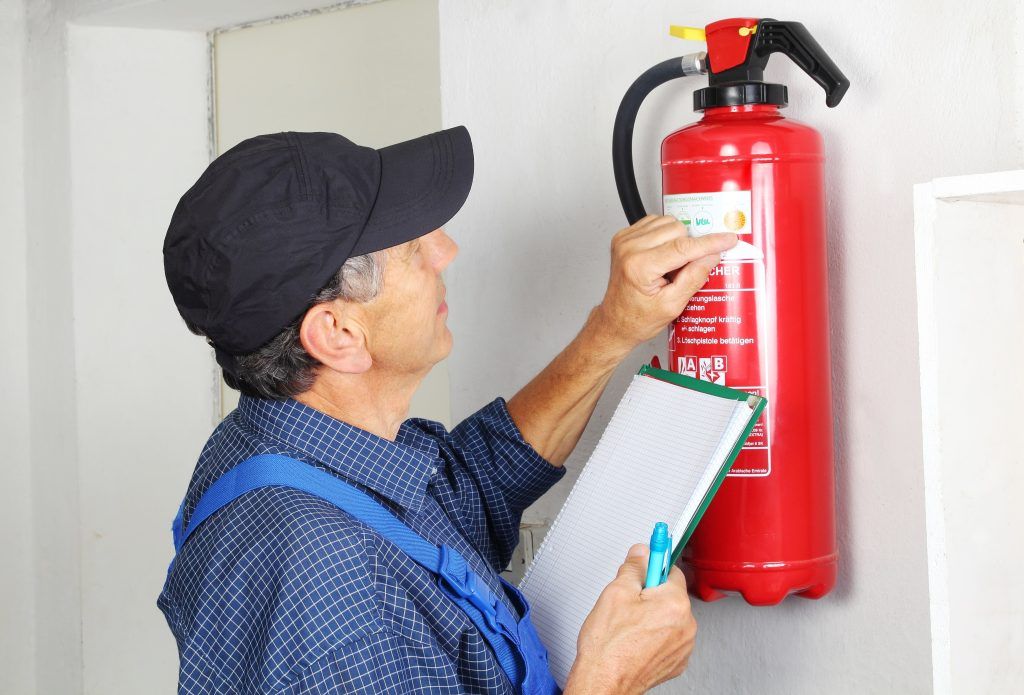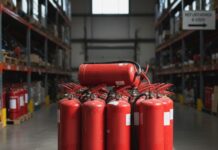Fire doesn’t discriminate. Whether you’re managing a warehouse, a restaurant, an apartment complex, or even just your own home, fire can strike without warning. And when it does, seconds matter. That’s why fire safety isn’t just a box to check—it’s a system of habits, tools, and preparation that can save lives, protect property, and prevent tragedy.
Yet despite this, many people and businesses overlook the basics. Fire extinguishers are expired. Sprinkler heads are obstructed. Emergency plans are half-formed or forgotten. All the while, the risk remains—quiet, invisible, and too often ignored.
In this article, we’ll break down fire safety into clear, actionable components that anyone can follow. Whether you’re a safety manager or a first-time homeowner, these steps will help you spot vulnerabilities and take meaningful action.
1. Fire Starts Small—But So Does Prevention

Most fires don’t erupt into massive blazes instantly. They begin with small ignition sources: a stove left unattended, a spark near combustible material, an overloaded power strip. These moments are where fire safety begins.
The key is identifying and addressing hazards before they escalate. Here’s where you can start:
- Cooking: Stay in the kitchen when frying, grilling, or broiling. Keep flammable materials—like towels, paper, or curtains—well away from heat sources.
- Electrical safety: Avoid overloading circuits. Regularly inspect cords and outlets. Extension cords are for temporary use only.
- Combustible materials: Store chemicals and flammable items in approved containers. Don’t let them accumulate in closets, garages, or workspaces.
- Smoking: Never smoke indoors. Use deep ashtrays and ensure materials are fully extinguished.
Most of these aren’t high-tech fixes—they’re simple, consistent behaviors. That’s what makes them powerful.
2. The fire extinguisher: your first line of defense
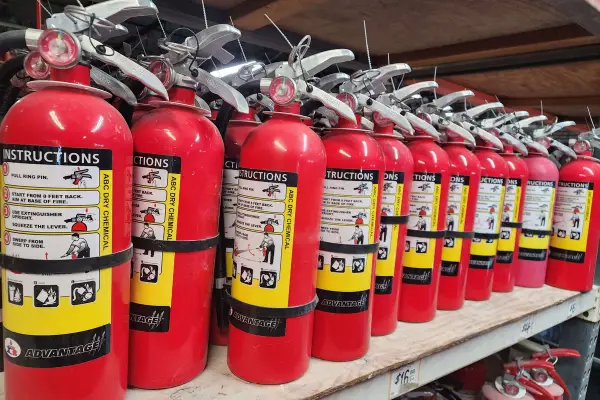
When a fire does ignite, the first moments are critical. A properly maintained fire extinguisher can be the difference between a scare and a disaster.
But owning an extinguisher isn’t enough. You need to understand what type you have, how to use it, and whether it’s still serviceable.
- Know your type: Most general-purpose extinguishers are rated ABC, meaning they cover common fires: combustibles (wood, paper), flammables (gasoline, oil), and electrical fires. But kitchens, data centers, and labs may require specialty units.
- Check the gauge: A quick glance at the pressure gauge will tell you if your extinguisher is charged and ready.
- Inspect regularly: Look for rust, dents, missing pins, or broken nozzles. Any of these can render the unit ineffective.
- Recharge or replace: Fire extinguishers need servicing—even if they’ve never been used. Some are rechargeable; others are disposable and must be replaced every 10–12 years.
Unfortunately, many people discover their extinguisher is out of date only after they need it. That’s why regular inspection is vital.
If you have an extinguisher you’re unsure about, there are facilities that can test, recharge, and service units for the public. For example, Serviced Fire Equipment offers walk-in fire extinguisher service for individuals and businesses who want to make sure their equipment is actually ready when it counts.
3. Training Matters More Than Equipment
Fire extinguishers, alarms, and sprinklers are essential—but they’re only effective when people know what to do. That’s where training comes in.
Every employee, resident, or family member should understand:
- How to identify the right extinguisher
- How to safely operate it (remember PASS: Pull, Aim, Squeeze, Sweep)
- When to evacuate vs. when to attempt extinguishing
- Where the exits are and how to get to them in low visibility
- Who to call and how to report a fire
For businesses, this means conducting periodic fire drills and safety refreshers. For families, it means walking through fire escape routes, testing alarms, and practicing what to do if someone’s trapped.
Knowledge is the real safety tool—equipment just helps support it.
4. Maintenance isn’t optional
Just like a car or a furnace, fire protection equipment needs regular upkeep. Dust, corrosion, or age can compromise its function without any visible warning.
Your fire safety plan should include:
- Monthly extinguisher checks
- Annual professional servicing of extinguishers and fire suppression systems
- Alarm and detector testing (monthly for smoke detectors, with battery replacements at least twice a year)
- Clear access to emergency exits, panels, extinguishers, and hydrants
- Documentation of all service dates, inspections, and maintenance
Whether you’re a building manager or a homeowner, building a habit of routine checks can prevent major problems later. Another practical measure can be to have code compliant access to concealed systems that technicians can inspect during routine maintenance. Access panels for walls and ceilings can allow inspections without compromising fire separations or finished surfaces. Products with quick install frames and bespoke sizes can reduce repair time and the need to cut into finishes during checks; for suppliers and specifiers, see their full product category here to learn more. Including properly specified panels in your maintenance plan makes monthly and annual checks safer and more efficient.
5. Know your weak spots
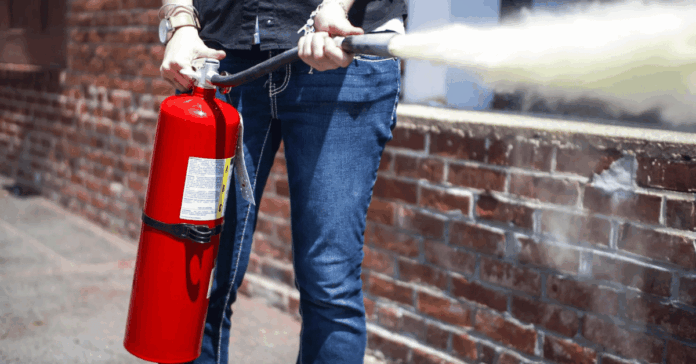
Fire safety isn’t one-size-fits-all. What works for an office building won’t be sufficient for a welding shop. A hotel has very different risks than a food truck.
That’s why it’s worth assessing your specific fire hazards:
- Do you store flammable chemicals?
- Do you cook with open flames?
- Are there lithium-ion batteries on-site?
- Are there people who may need help evacuating (children, elderly, disabled)?
- Do you have any high-value or irreplaceable assets (data centers, art, documents)?
Once you understand your risks, you can plan accordingly: specialty suppression systems, increased alarm coverage, even fireproof storage.
6. After the Fire: Don’t Overlook Recovery
Even if a fire is contained, the aftermath can still be disruptive and dangerous. Smoke damage, sprinkler flooding, and chemical residue can cause long-term problems if not properly addressed.
Make sure you:
- File a report immediately
- Document all damage for insurance
- Have extinguishers refilled or replaced
- Get clearance before reoccupying the space
And if you’ve used a fire extinguisher—even briefly—don’t just put it back on the wall. It needs servicing, even if it looks full.
Fire safety is a mindset
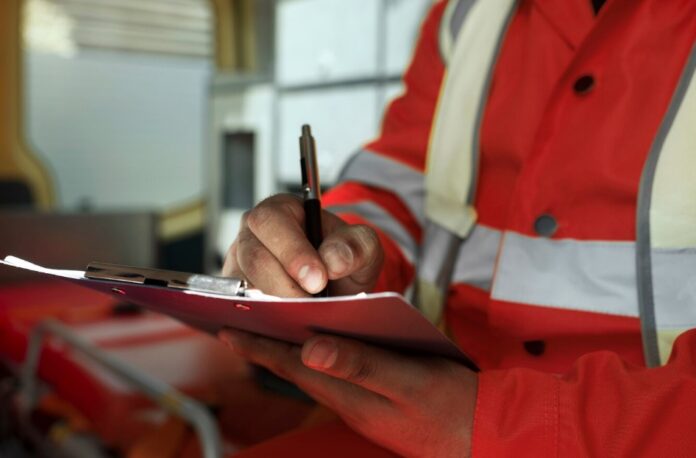
When people think of fire safety, they often picture alarms, hoses, and blinking lights. But fire safety isn’t just about gear—it’s a mindset. It’s the decision to check your equipment. To train your staff. To walk your kids through a fire drill. To take two minutes each month to glance at a gauge.
Because when fire strikes, you won’t have time to think. You’ll fall back on what you’ve prepared. And whether you’re in charge of a business or just protecting your family, that preparation makes all the difference.
In fact, in larger environments like hotels and resorts, fire safety requires even greater vigilance. For example, hotel fire safety protocols highlight how critical regular inspections, clear evacuation procedures, and staff readiness are to protecting both guests and property.
Want to make sure your extinguishers are ready?
Serviced Fire Equipment offers walk-in fire extinguisher service for both businesses and individuals. Whether you need recharging, testing, or just peace of mind, having your units professionally inspected is a smart—and often overlooked—step toward true fire readiness.

